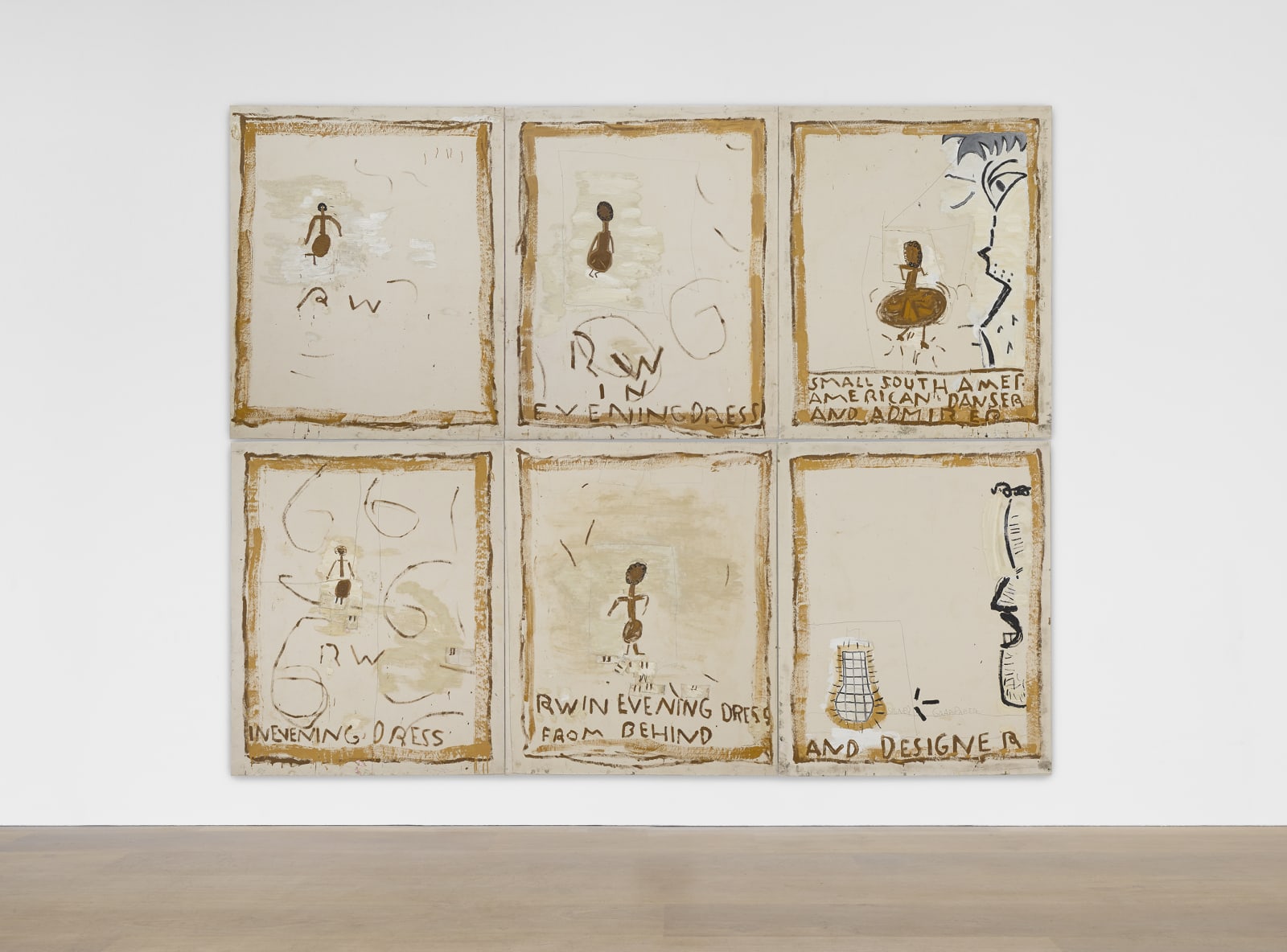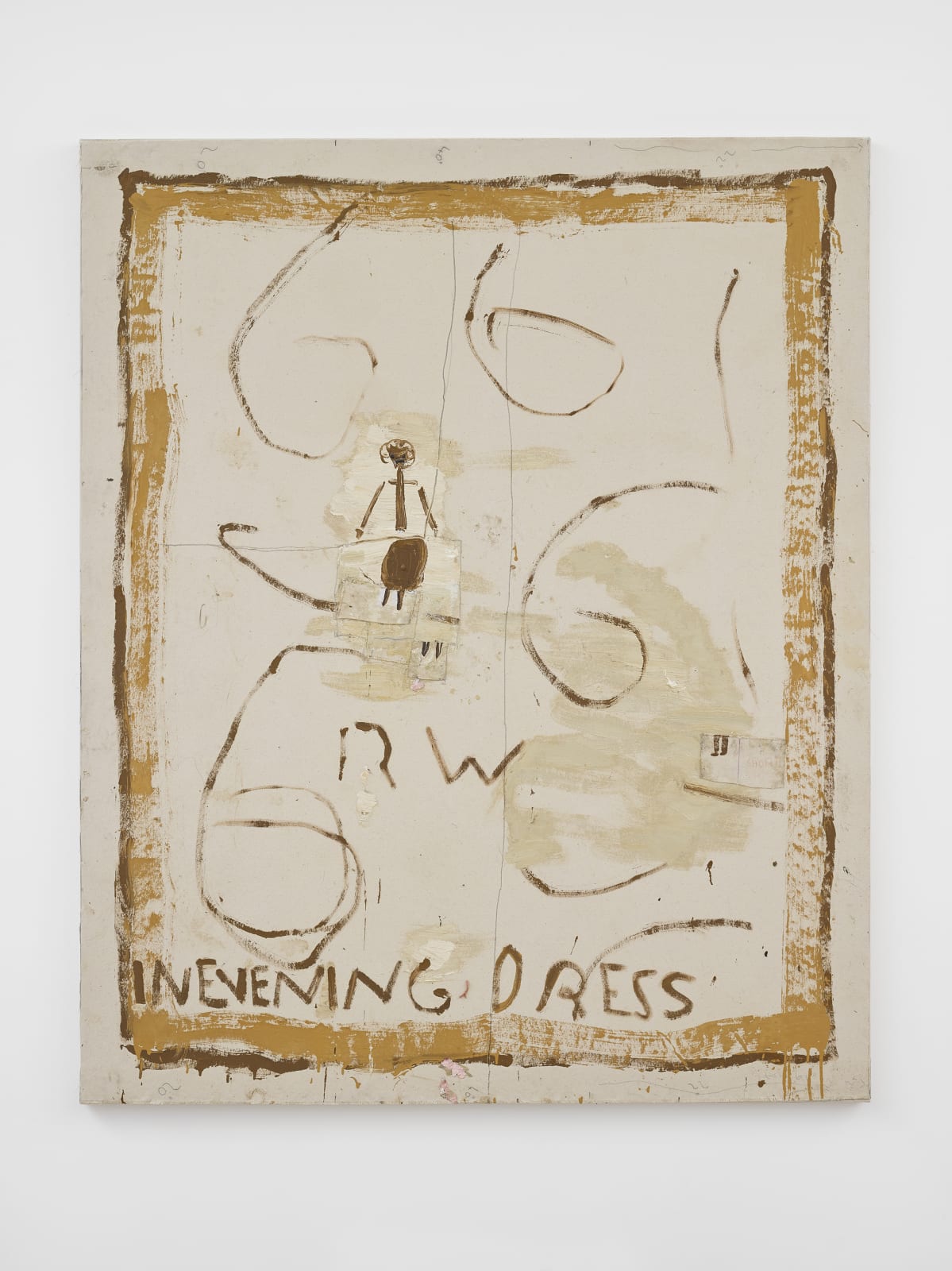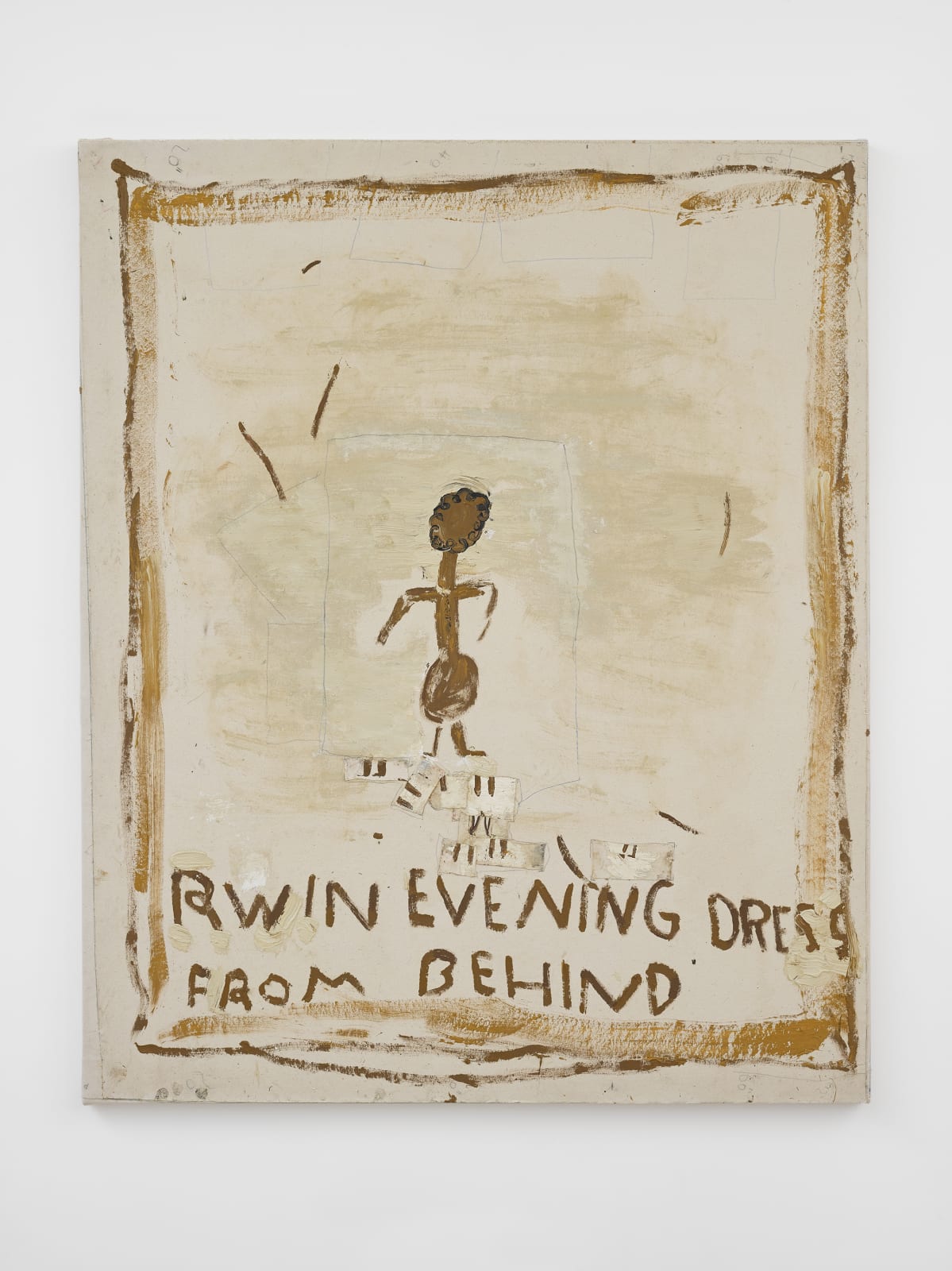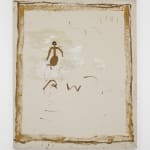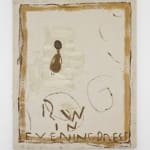-
Rose Wylie
Drab Ant Work - RW in evening dress, 2019oil on canvas ( six parts)182 x 149 cm (each part)Further images
Yesterday’s image for THE UNSEEN MASTERPIECE was made by Louise Bourgeois in 1992 when the artist was 81, a year noted as marking Bourgeois 'arrival' in the wider public consciousness...Yesterday’s image for THE UNSEEN MASTERPIECE was made by Louise Bourgeois in 1992 when the artist was 81, a year noted as marking Bourgeois 'arrival' in the wider public consciousness (despite an already long and productive career) with her inclusion as the sole woman in the Guggenheim's inaugural SoHo show and the announcement that she would represent the USA at the Venice Biennale the following year. Today’s contribution is a monumental painting by Rose Wylie; another artist whose work has found acclaim and critical recognition later in life but who rightly wants to be known simply as a painter, rather than for either her age or sex. It is the paintings that matter most, and like Bourgeois she has spent a lifetime developing a deeply personal, drawing-based language that is instantly recognisable as her own, balancing a kind of anxious hesitancy and a casual certainty of mark making.
In this work, a sort of self-portrait as an ant-figure in evening dress, Wylie herself appears, dancing across a series of six hectically empty canvases. It is one of her biggest paintings to date, and typical of her large works in being marked by an unbridled energy and a joyfully direct visual language in which text and image jostle for position. As Clarrie Wallis has noted Wylie’s pictures “are painted with a kind of visual shorthand that is direct and legible. The ability to elicit a range of responses is made possible precisely because of her reduction of form to an essential vibrancy…”. *
* Clarrie Wallis, Rose Wylie (London, Lund Humphries, 2018, p.8)
